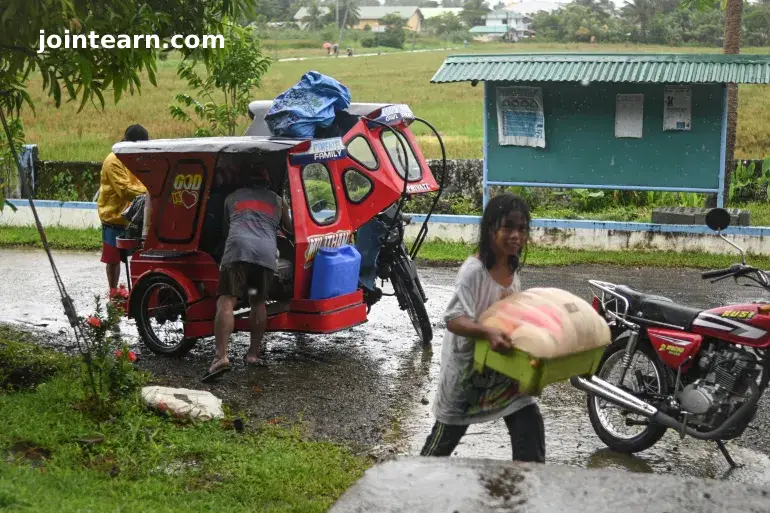
More than 70,000 residents in the eastern Philippines have been ordered to evacuate as Typhoon Kalmaegi rapidly approaches coastal cities and provinces. With winds reaching speeds of up to 150 km/h (93 mph) and forecasted storm surges of up to 3 meters (10 feet), authorities are urging communities to seek immediate shelter as the massive weather system bears down on the archipelago.
📍 Where is Typhoon Kalmaegi Headed?
As of Monday, forecasters warned that the centre of Typhoon Kalmaegi was expected to make landfall between Guiuan and Salcedo in Eastern Samar, with other coastal towns including Mercedes in Camarines Norte also placed on high alert.
- Guiuan, Eastern Samar: A municipality with tragic experience. In 2013, it suffered direct impact from Super Typhoon Haiyan (Yolanda), one of the strongest storms ever recorded, which left more than 7,300 people dead or missing.
- Cebu Province: Forecast to face heavy rain after the storm passes inland, just weeks after a magnitude 6.9 earthquake in September damaged key infrastructure and left recovery efforts ongoing.
🏠 Mass Evacuations Underway
Local authorities have mobilized efforts to evacuate vulnerable populations:
- People living within 50-100 meters of coastlines are being relocated to designated evacuation centers, including schools and municipal buildings.
- Fishermen have been banned from venturing out into rough seas, particularly in Samar, Camarines Norte, and surrounding provinces.
- Provincial governments have suspended classes and government work, activated disaster response teams, and prepositioned relief goods, water supplies, and medical staff.
🌊 Storm Surges, Flooding, and Winds: What’s Expected?
The Philippines’ weather bureau (PAGASA) has issued an alert, warning of:
- Torrential rains that may trigger flash floods and landslides in mountainous regions
- Dangerous storm surges in low-lying coastal towns
- Damaging wind gusts capable of toppling trees, power lines, and unreinforced homes
Typhoon Kalmaegi is currently classified as a Category 2-equivalent storm, but meteorologists warn that conditions in the Pacific Ocean remain favorable for it to intensify before landfall.
🔥 Climate Change and the Growing Severity of Storms
With the Philippines located in the typhoon belt of the Pacific, it is struck by an average of 20 tropical storms and typhoons annually. However, scientists and environmental groups are sounding the alarm: climate change is making these storms more severe and unpredictable.
The archipelago has seen a worrying trend of stronger and more destructive weather events, including:
- Super Typhoon Ragasa (September 2025) which struck northern Luzon and Taiwan, killing 14 people and causing widespread flooding
- Increasing rainfall intensity, sea-level rise, and rapid storm formation in warmer waters of the Western Pacific
As a country also prone to earthquakes and volcanic eruptions, the Philippines is consistently ranked among the world’s most disaster-prone nations.
🚨 Looking Ahead
Typhoon Kalmaegi is forecast to move westward overnight, impacting central Visayas on Tuesday. The national government has placed regional disaster councils on 24/7 alert, and President Ferdinand Marcos Jr. is expected to address the nation regarding evacuation and contingency plans.
Early warnings and rapid mobilization saved countless lives during past storms — but the next 48 hours will be critical.
Leave a Reply